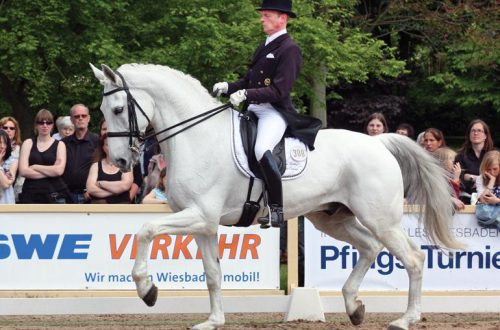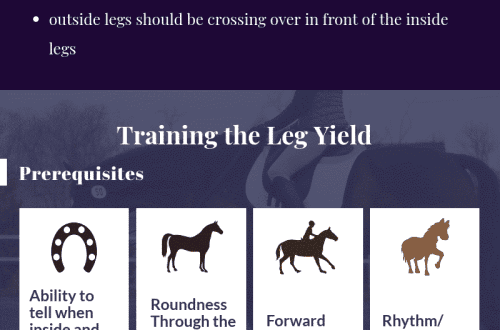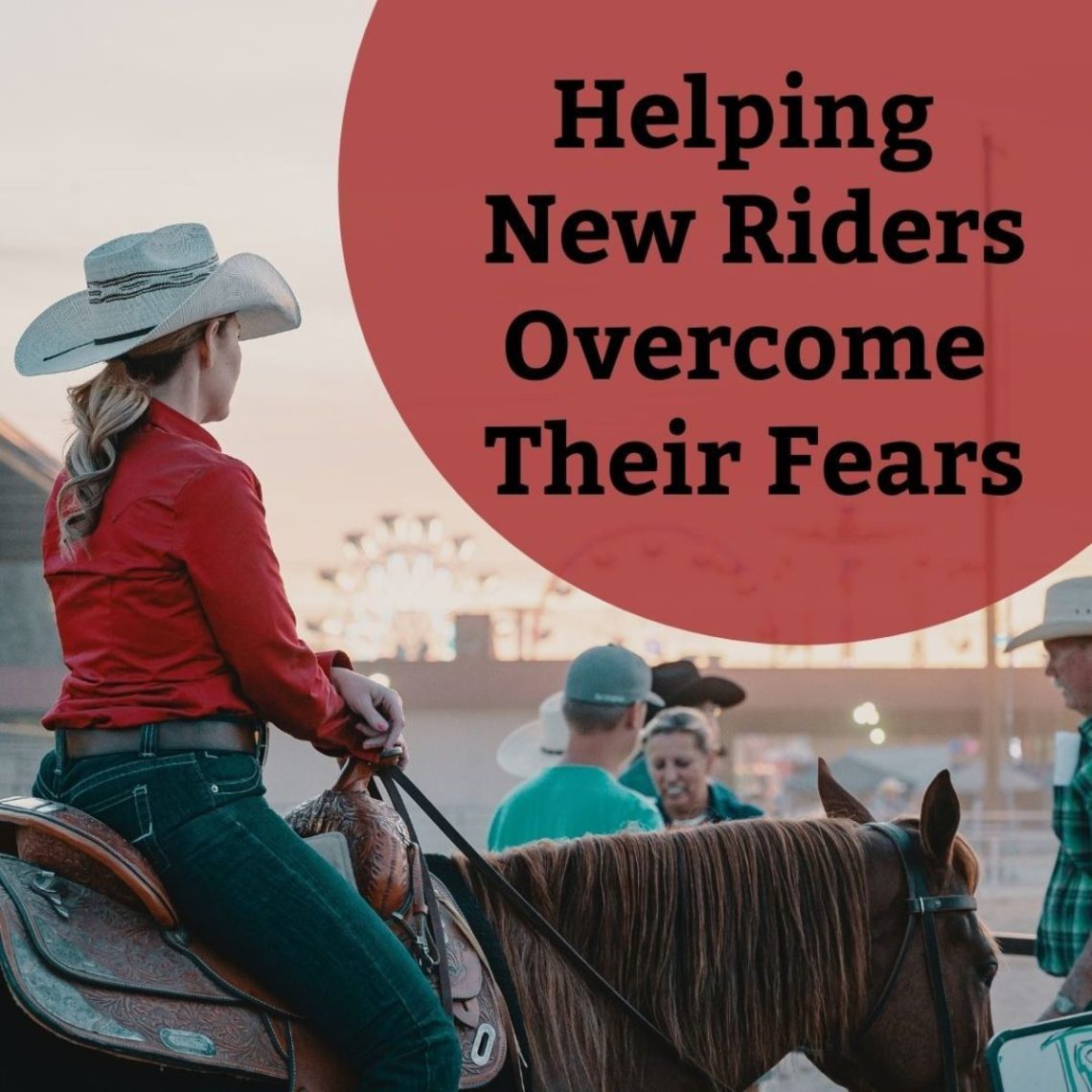
Point of view: how to help beginner riders deal with fear
Point of view: how to help beginner riders deal with fear
Fear in beginner riders is usually the result of a feeling of lack of control over the horse and/or one’s own body. It is much easier for adult beginners to understand the concept of leadership and responsibility, but it is difficult for children to explain all these subtleties. Children need to feel what control is.
One day my grandmother brought her two ten-year-old granddaughters to my classes. One girl was in great shape. She competed in gymnastics tournaments, had excellent balance and was determined to work. The other one was the complete opposite. She was tall and thin, not very strong and timid. She hesitated often; afraid to do something wrong. She was a dreamer. If we could look into her mind, we would see her galloping on a horse bareback through a field of flowers.
Among my horses was a wonderful pony, very easy to ride and handle. He was very curious and sociable. You just unfasten the halter in front of him, as he himself puts it in head and ready to go. Most of my timid and insecure riders started with him, because under the saddle he was just a sweetheart and trustworthy. When not under the saddle, he never tried to hit or bite anyone, but his restlessness ensured that the child would not be distracted from him or talk on the phone with his friends. He adored attention and communication.
His peculiar importunity frightened the timid child, and the grandmother could not help but comment on the actions of her granddaughter during the preparation of the pony for work. I often reassured her that everything was going well, but that didn’t help. One day, my grandmother blurted out: “Show him who is in charge here!”
Everything in my stomach tightened up. I looked at a 300 kg pony who did nothing but be a pony and a 40 kg girl who needed a grandmother to make herself comfortable. This is how violence among horsemen arises. “Show him who’s in charge” this, and any other similar phrase, should be banned from all stables. Immediately brings to mind the image of an uncle who forces the horse to obey and the only tools he has are violence and fear. Riders should use the phrase “leader” and not “Show him who’s in charge here.”
I tried my best not to flinch. “We prefer not to use this phrase. You have to earn respect and the girl is doing well.”
So, how does a child become a leader for a pony? Words can evoke vivid pictures related to life experiences and perceptions. Tell an eight- or nine-year-old that he needs to be the leader and he can introduce his class to follow the attendant on the field trip. It won’t work with ponies. In the pony world, the position of leader is earned. as a result of long, consistent, competent work.
When I see a beginner having confidence issues while riding, I try to look closely at how he handles the horse on the ground. If he is not comfortable and cannot confidently control the horse on the ground, he is likely to have the same problems in the saddle. Fear is natural for beginners, but groundwork helps students gain confidence.
Riding instructors must be observant and able to tailor work to specific needs. I rarely turn a riding lesson into a groundwork lesson, but sometimes certain circumstances arise, such as the weather or problems.
I am always ready to start a lesson on the ground if I see that it is necessary. Some instructors worry that the child’s parents may become angry when they see their child not in the saddle. After all, these are “riding lessons.” For some reason, we don’t explain to people that the lessons on the ground are just as important as the lessons on horseback, and they also require practice. Fear in newbies can go faster if we look at its problems on the ground. If a parent or student trusts you to draw up a riding development plan, they will not be outraged if the lesson turns from “equestrian” to “foot”, especially when they see improvements in the following lessons.
Riding instructors also need to be creative people. Choose a plan that your horse can easily follow. When I want to work on the ground, I can lay out a small pole route that my training horses will run without hesitation or resistance.
The number of “hurdles” you use will be determined by the length of your lesson and the number of students. The course might look something like this:
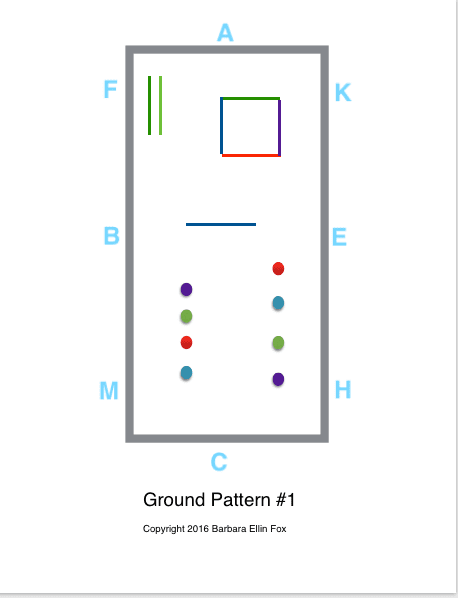
I give my students enough time to process each “obstacle”.
I use dressage markers as control points.so that students know how and where to go, turn, go in circles or stop, etc.
Once the students are able to pass all the “obstacles” by leading the horse at a walk, we try the same exercises at the trot.
Here are some of my favorite exercises below.
Exercises 1 and 2: moving snake up and down
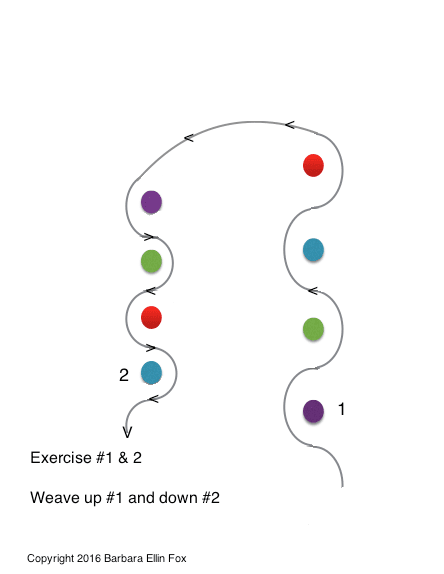
Exercise 3
Ask the student to stop the horse over the pole – front legs behind the pole, hind legs – to:
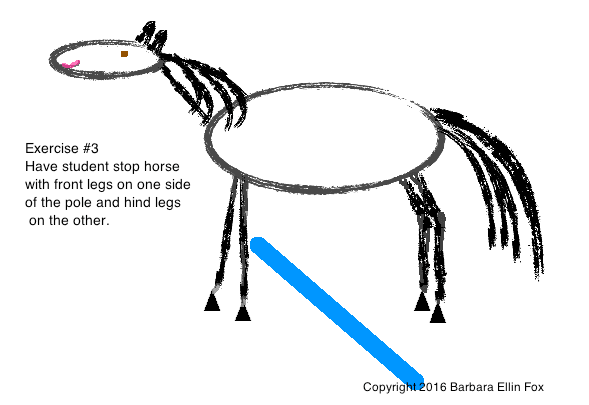
Stop the horse just behind the pole so that the hooves of the hind legs are as close to it as possible.
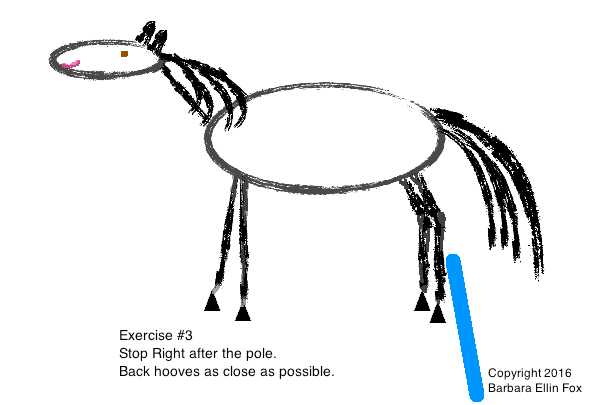
Exercise 4
We go to the left in a circle inside the square. Then – to the right.
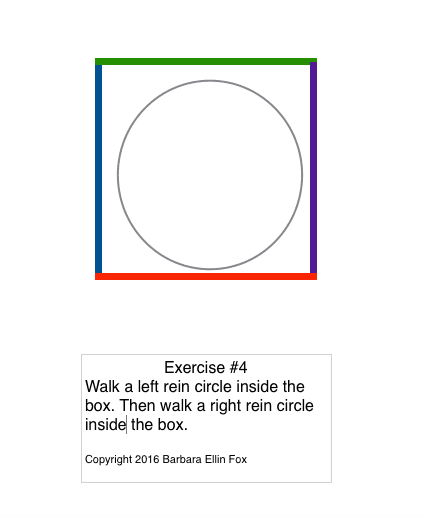
We go to the left in a circle around the square. Then – to the right.
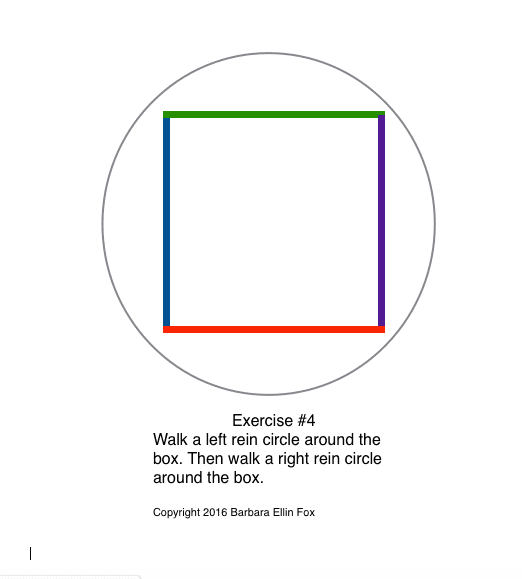
Exercise 5
We lead the horse into the corridor of poles, stop halfway and lead out.
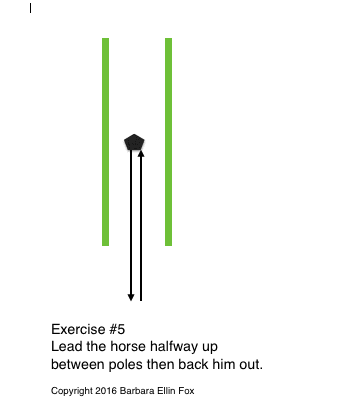
Barbara Allyn Fox (source); translation by Valeria Smirnova.



